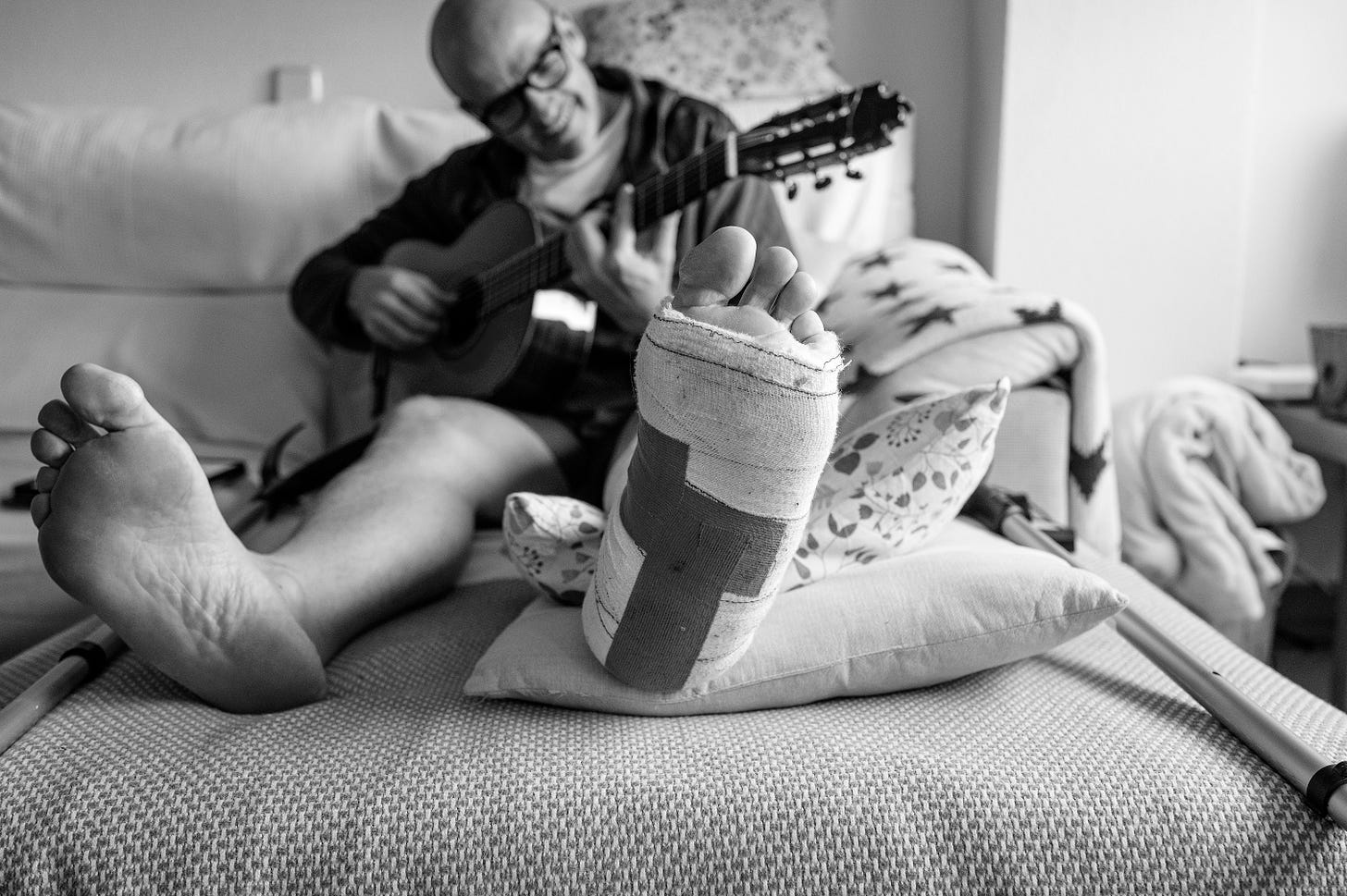There’s a peculiar heartbreak in watching a musician fall silent—not for lack of inspiration or opportunity, but because their body gives out before their spirit ever could.
Repetitive Strain Injury (RSI) isn’t glamorous. It doesn’t come with a triumphant comeback tour or a tearful reunion on stage. It arrives slowly, insidiously—one aching wrist, one throbbing shoulder, one stiff neck at a time—until the music itself becomes the cause of pain. And for gigging musicians, it’s all too common.
As someone who has walked the halls of green rooms for three decades, patched up broken stage gear, and comforted limping guitarists and exhausted drummers post-show, I’ve seen firsthand the toll that RSI takes on bodies, minds, and careers. It’s a crisis we don’t talk about enough—and in Musoverse, we believe it’s time we did.
Let’s get one thing straight: pain is not the price of passion. It’s a warning sign. You are not supposed to hurt to play.
James Hetfield (Metallica) once said: "When you’re young, you think you’re invincible. I used to play through the pain, thinking it was rock and roll. But pushing through RSI nearly cost me my hands—and my band.”
Evelyn Glennie (world-renowned percussionist) backs him up with this:
"Repetitive injuries are a silent scream. They creep in through the cracks of our overcommitment. Listen early—or you won’t be able to listen at all."
Two powerful studies shed light on the dark undercurrent of pain gigging musicians endure and offer the data that we simply cannot ignore:
Ackermann, B. & Adams, R. (2004)
“Physical characteristics and pain patterns of skilled instrumental musicians” – Medical Problems of Performing Artists
📈 Up to 86% of professional musicians report musculoskeletal symptoms linked to RSI during their career.Zaza, C. (1998)
“Playing-related musculoskeletal disorders in musicians: a systematic review of incidence and prevalence” – Canadian Medical Association Journal
📉 Between 39% and 87% of instrumentalists experience some form of RSI, with many forced to take prolonged breaks or retire early.
So the big question is this: Why Is RSI So Prevalent in Gigging Musicians?
Because gigging isn’t just about playing.
It’s loading in gear at 4 PM, soundchecking in a freezing room, standing for 3-5 hours, carrying 25kg speakers out to the van at 2 AM, and doing it all again the next day. It’s sustained postures, repetitive movement, late-night kebabs, dehydrated muscles, and no recovery window. It’s culture, but it’s also conditioning. And we need to change it.
Here are the Musoverse Top 10 #wellplayed Strategies to Help
Whether you’re a drummer loading into a regional pub or a singer on a three-hour wedding set, these simple strategies can help you stay strong and pain-free:
At the Gig:
Warm-Up Ritual (5 mins):
Roll your shoulders, flex your wrists, do slow neck circles. Your body is your first instrument—tune it.Breath Breaks Between Sets:
Four seconds in, four out. Calm your nervous system. Help your muscles release tension.Hydration Before & After Sets:
Dehydrated muscles cramp faster. Aim for 500ml water before load-in and post-show.Smart Lifting Technique:
Bend knees, keep gear close to your body. Use trollies. Protect your back like you would your guitar.Post-Gig Stretch (2 mins):
Focus on hamstrings, calves, wrists, and shoulders. This helps flush lactic acid and prevent tightness overnight.
Lifestyle Off-Stage:
Anti-Inflammatory Diet Swaps:
Replace refined carbs with whole grains, swap out fried food for omega-rich meals, and add turmeric and ginger. Less joint inflammation = longer playing life.15-Minute Daily Mobility Routine:
Pilates, yoga, or resistance band work to build core and joint stability—especially wrists, neck, shoulders.Weekly Myofascial Release (Foam Roller or Massage Ball):
Target your lats, IT bands, and traps. Relieve trigger points from long sets and bad posture.Digital Detox Before Bed (30 mins):
Reduce blue light. Sleep is your best regenerative tool for tissue repair.Breath-Focused Meditation (10 mins):
Even if it's just focusing on your breath in silence, it calms your nervous system, balances cortisol, and aids recovery.
Final Notes from the Back of the Van…..
If you’re touring, gigging, or even playing local weekend shows, your body is the unsung hero of every performance. You protect your pedals, polish your brass, string your guitar—start treating your back, your knees, your neck with that same reverence.
You deserve a long, pain-free life of music.
Play hard. Rest harder. And remember—being #thewellplayed musician isn’t just about performance. It’s about sustainability.
Until next time,
Sources Cited:
Ackermann B, Adams R. "Physical characteristics and pain patterns of skilled instrumental musicians." Medical Problems of Performing Artists. 2004.
Zaza C. "Playing-related musculoskeletal disorders in musicians." Canadian Medical Association Journal. 1998.
Written by Nichola Burton. I work in partnership with Agents, Artist Managers and Event Producers, who juggle a diverse range of relationships in the Musoverse, to curate, manage and measure data in systems, experience, creative and content to support the entire Musoverse operation in my enterprise A Little Pitchy Copyright 2025



